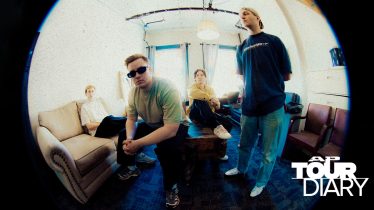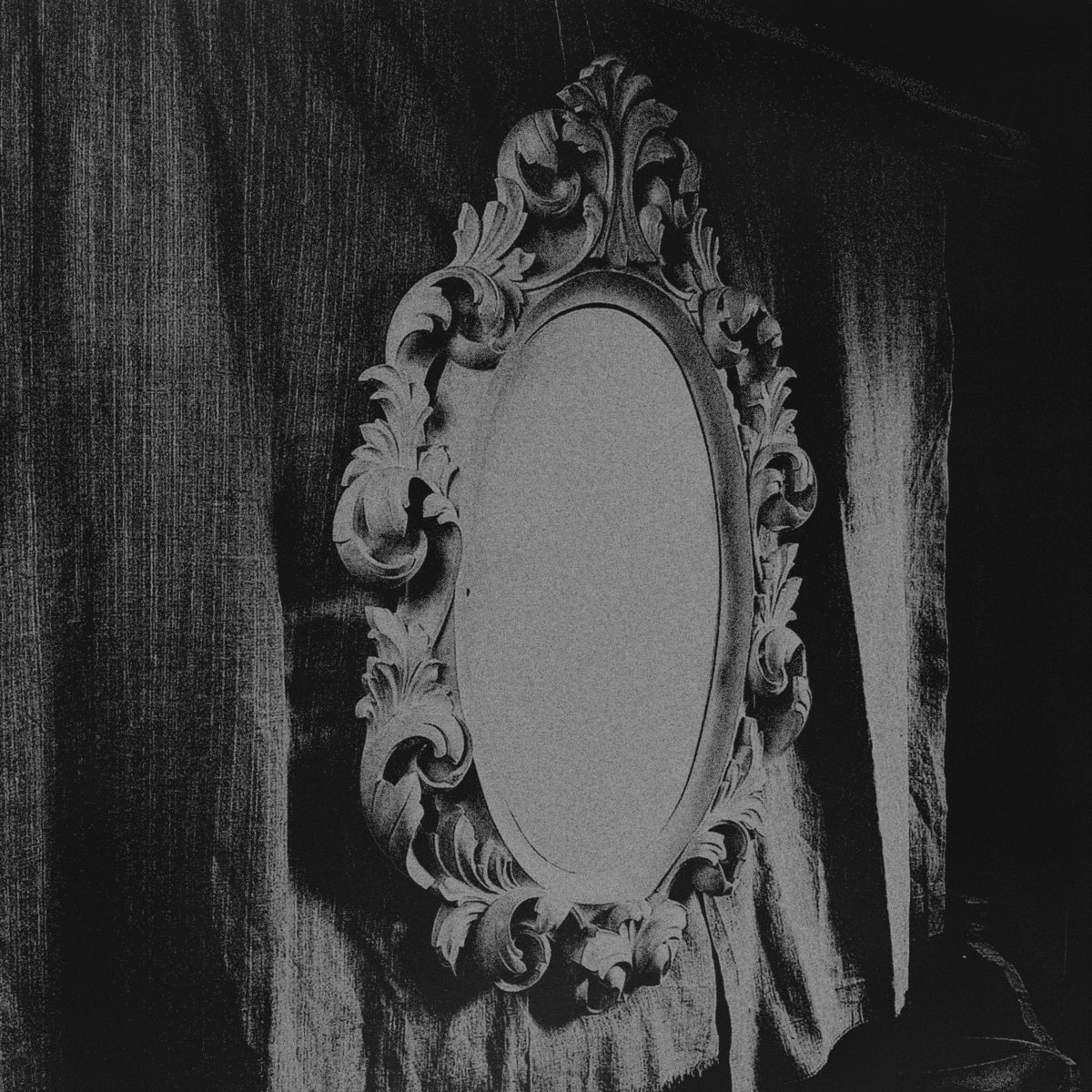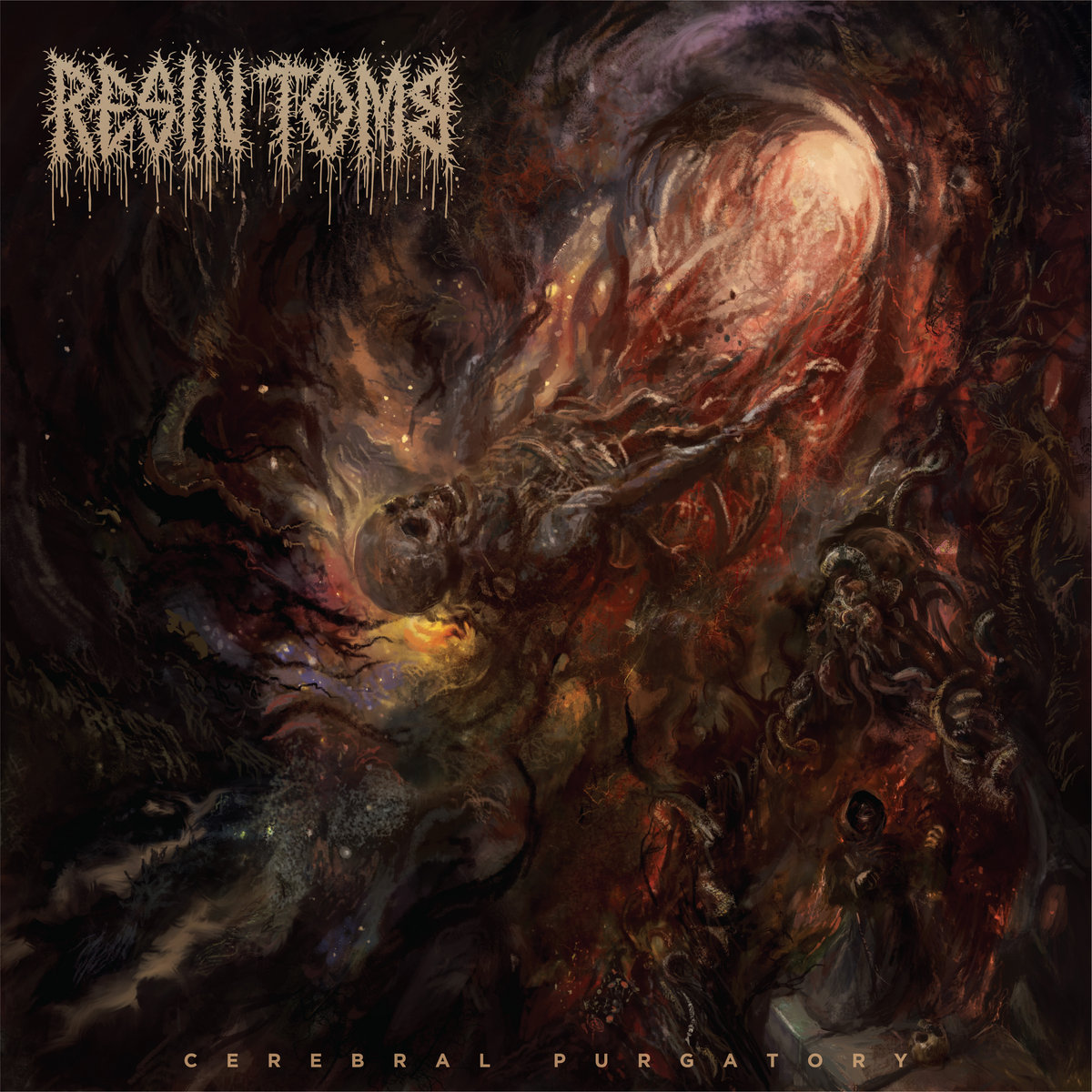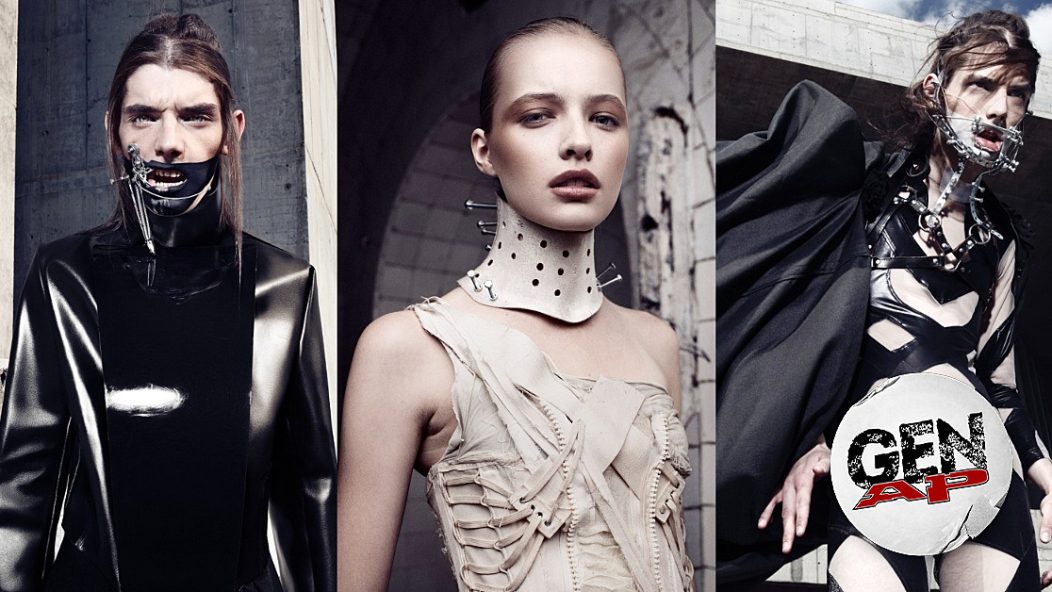
Meet fashion and costume designer Katarzyna Konieczka, the queen of macabre aesthetics
Welcome to Generation AP, a spotlight on emerging actors, writers and creatives who are on the verge of taking over.
From cervical collars with metal attachments to extravagant headpieces, Polish fashion and costume designer Katarzyna Konieczka is the queen of macabre aesthetics. Some of her medical-inspired designs might make you want to cancel your next dentist appointment — but at the very least, they will stimulate your imagination.
Read more: How Anna Sui created some of music’s most iconic looks
Konieczka has managed to make world’s biggest pop stars fall in love with her pieces. Hailing from Sopot, Poland, she graduated from Warsaw’s International School of Fashion and Costume Design in 2008, and since then, magazines and celebrities have kept her busy — working with everyone from Lady Gaga and Madonna to heavy metal band Behemoth, as well as editorially, with shoots in magazines like Vogue and i-D.
Alternative Press spoke to Konieczka about some of her biggest projects, as well as the inspiration behind her vision.
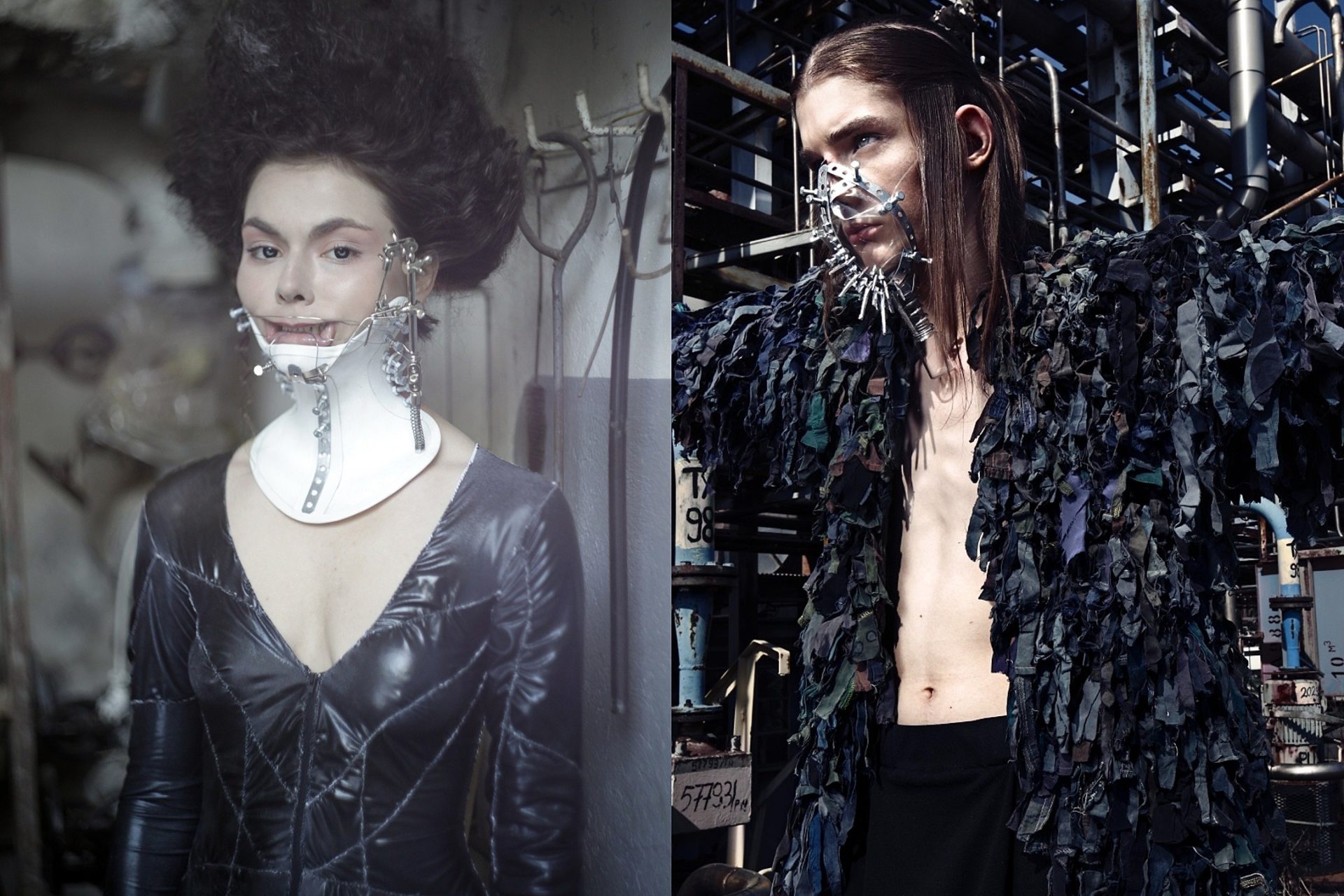
[Photo by Maciej Boryna]
How did you get into design? What was the genesis of your artistic expression?
Generally speaking, the answer is childhood. It takes a particular type of person — someone who observes carefully, someone who tends to notice other things than their peers. I’ve always seen inspirational shapes and silhouettes in everyday objects. I didn’t pay attention to things most children are supposed to pay attention to. My imagination would take me to a fantasy world. That’s how it all started.
Your style is quite unique. How would you describe it yourself and who are some of your inspirations?
My style is rich in its form, dark, organic.
I’m inspired by the likes of [artist] H. R. Giger, who worked on the Alien franchise, and Zdzislaw Beksiński, known for his dystopian, surrealist paintings and photographs. They’re full of darkness — a special, evil aesthetic that seems like it’s made of dark, lace patterns. When it comes to Giger, I’m inspired by the way he worked with shape. He created his own anatomical systems, or bones, which was compelling. Eiko Ishioka is [another one of] my inspirations, especially the work she did for [the 2000 sci-fi film] The Cell. So are my peers from my hometown of Sopot and its the club scene, which was full of artists and designers.
Your designs appeared in Lady Gaga’s “Yoü and I”music video, which came atsuch an iconic time in pop culture. In the video, Gaga is seen wearing your designs, including metal chains and cables around her face and neck. How did that collaboration come about?
Her team contacted me — the people who worked for Nicola Formichetti, Gaga’s stylist back then — asking for my black and golden corsets. When that correspondence took place, I already had a brand-new collection out, so I asked if they wanted to see the new stuff and they said sure. They loved all the new items, even though they were so different from the designs they originally wanted. They loved all the metal designs, the ones with cables attached.
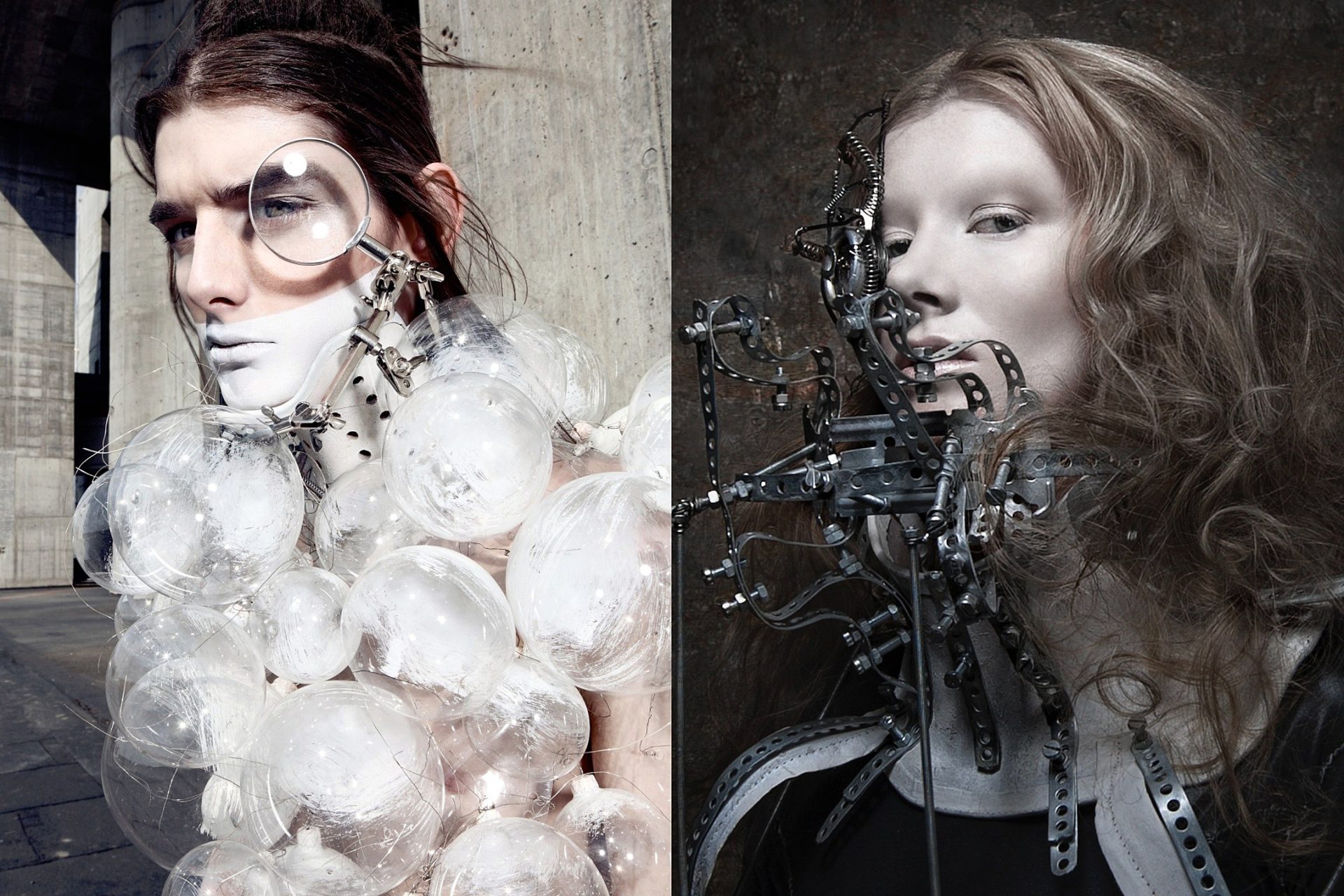
[Photo by Maciej Boryna]
Your work work was recently used in Madonna’s cover photoshoot for Vanity Fair. How did that happen?
Madonna’s creative stylist messaged me on Facebook. I worked with her before on a Fergie music video called “A Little Work.” Initially, I tried not to get too excited. I thought that she was probably speaking to multiple designers all over the world at that time, that it was still early stages and nothing certain. But after the shoot, she messaged me to say it all went fabulously! She was so excited, sending me so many exclamation marks.
That was the first time for me getting such positive feedback and feeling appreciated. I designed so many original items, especially for Madonna. I felt so fulfilled.
What advice would you give to other designers who aspire to see their work worn by the biggest stars?
To conserve and protect your uniqueness, your originality. Give yourself a chance to look inward, detach yourself from other creatives, find your own way.

